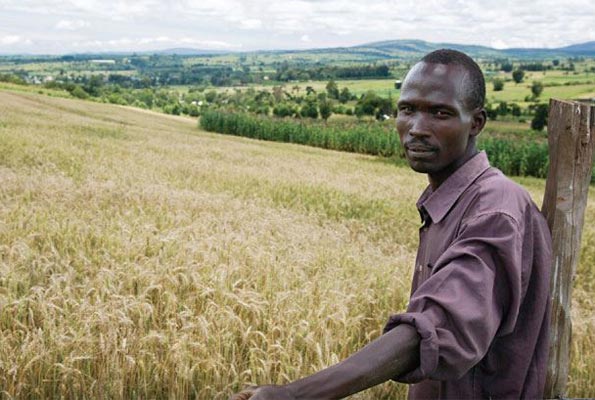The Kenyan Ministry of Agriculture has asked millers in the country to buy all wheat harvested this season from farmers before importing to curb a deficit of 750,000 tonnes of the produce used in making flour and baking purposes.
Last season, the government and millers bought a 90kg bag of wheat at Sh3400 up from Sh3,000 in 2016.
The ministry says that local farmers will be given priority so as to ensure all farmers have ready market for their produce.
Kenya’s wheat production decreased by 23.1 per cent from 214.7 thousand tonnes recorded in 2016 to 165.2 thousand tonnes in 2017 according to the 2018 economic survey report released by the Kenya National Bureau of Statistics in April this year.
Wheat imports into the country thus increased by 36.2 per cent in 2017 in order to curb the shortage of the produce from 1,362.3 thousand tonnes in 2016.
Related
Wheat farmers double yields with row planting
New wheat planting method tames weed spread
Farmers thresh 110kg of wheat per hour free with KALRO machine

A farmer in a what field. Courtesy
According to KNBS, Kenyans consume an estimated one million tonnes of wheat annually. Wheat is the second most important cereal grain after maize in Kenya.
Farmers in Rift Valley are projecting a 30 per cent drop in projected harvests this season as some farmers have abandoned growing of the crop.
Wheat is mainly grown in Nakuru, Uasin Gishu, Narok, Meru, Nyandarua, Trans Nzoia, Laikipia, and Elgeyo Marakwet counties.
A Narok County farmer Geoffrey Rono for instance has abandoned wheat for hay production after losing six million shillings on his 48 acre farm due to poor records.
“I was forced to sell my tractor at Sh1.5m to enable me start afresh by venturing into hay and greenhouse farming,” said Rono.
The farmer is now earning roughly Sh2.8m from hay sales and a further Sh3.2m from his greenhouse where he has planted tomatoes.
Some other farmers have dumped wheat for pepper cultivation at a time when horticulture has been ranked as the fastest growing sub-sector in the agriculture industry.
Rupa Fruits and Vegetables Farm in Uasin Gishu for instance are now dealing in two chilli varieties (tabiche and Carolina cayenne) with the farm manager Wilson Cheruiyot crediting the shift to the crop’s fast maturity in three months and high earnings of up to Sh350 per kilo.
”We started this farm in 2016 as we were tired of maize farming because of long queues at the National and Cereals Board depot in Eldoret, year in year out and high costs of maize and wheat production which are at Sh50,000 per acre against net profit of only Sh10,000 yet we wait for the whole year to harvest maize,” said Cheruiyot.
In the County, hitherto considered Kenya’s bread basket, wheat production dropped from 466,000 bags in 2016 to 430,000 bags in 2017 due to prolonged drought and reduction in acreage of land under wheat.
Maize production in the county also declined from 4.4m bags in 2016 to 3.7m bags in 2017 attributed to fall army worm invasion, maize smut disease and the maize lethal necrosis disease.
“The drop in production of the two crops will significantly affect poor households on both the rural and urban areas who depend on the produce for food and income,” said Jacob Tanui, an agricultural agronomist based in Eldoret town.
















Comments powered by CComment